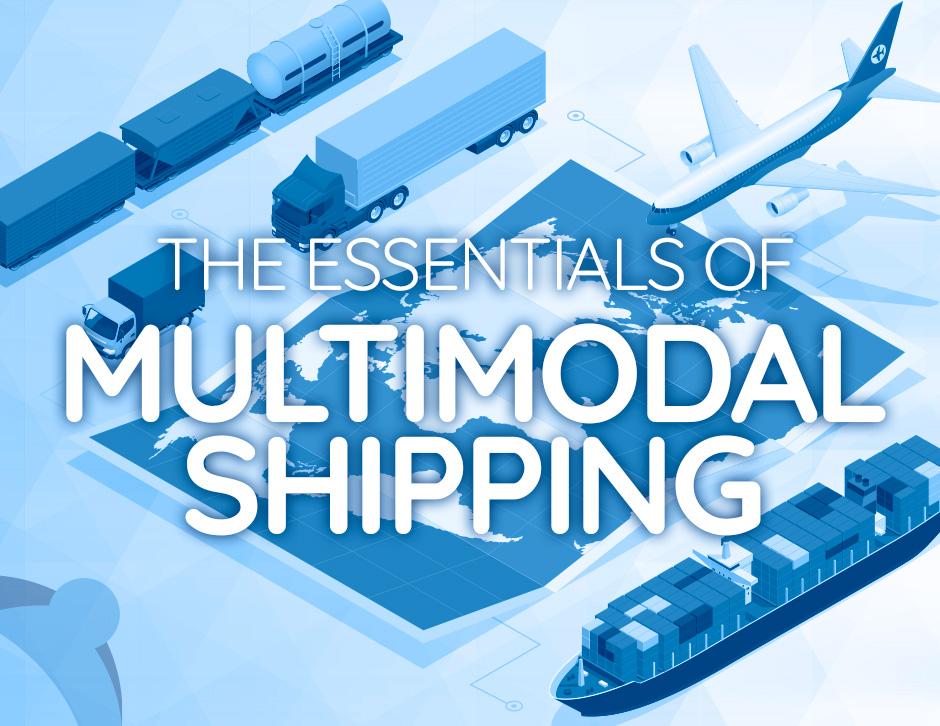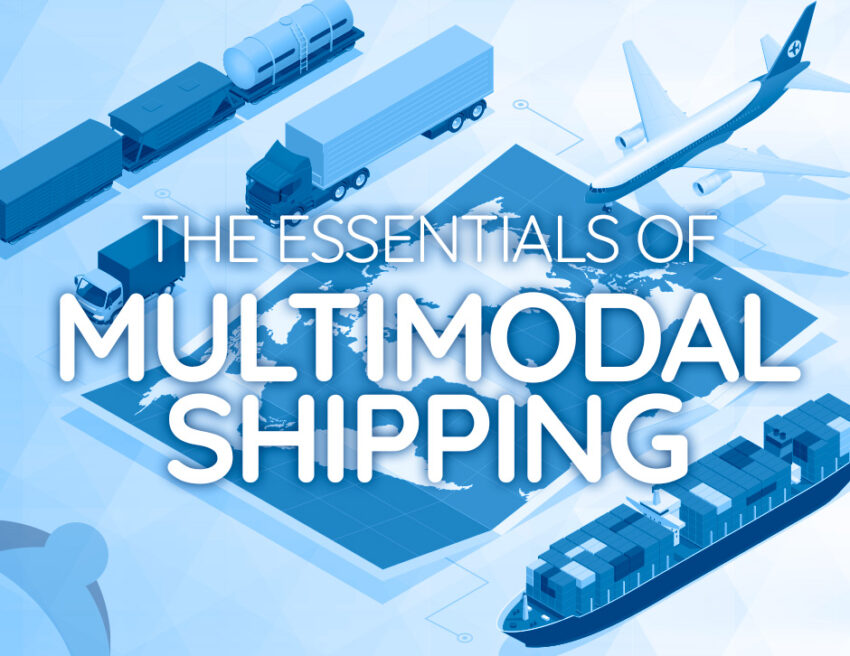Multimodal shipping represents a sophisticated approach to logistics that integrates multiple transportation modes to move goods from origin to destination efficiently. Unlike traditional single-mode shipping, multimodal shipping utilizes a combination of transportation methods—such as air, sea, rail, and road—under a single contract and bill of lading. This approach simplifies the logistics process and can offer significant advantages to freight forwarding companies. However, it also comes with its own set of challenges. Here’s an in-depth look at multimodal shipping, its benefits, drawbacks, and the steps involved in managing such complex logistics.

What is Multimodal Shipping?
Multimodal shipping involves using at least two different modes of transportation to move goods from one point to another. The key feature of multimodal shipping is that it operates under a single contract and house bill of lading issued by a Multimodal Transport Operator (MTO), regardless of the number of carriers involved in the journey. The MTO is responsible for coordinating the entire shipment, handling all documentation, and ensuring the cargo reaches its final destination smoothly.
For instance, a shipment might begin its journey by road, switch to rail for a long-distance inland transport, and finally be transported by sea to its international destination. Each leg of the journey is managed by different carriers, but the coordination and responsibility rest with the MTO.
Multimodal vs. Intermodal Shipping
While both multimodal and intermodal shipping involve multiple transportation modes, they differ significantly in terms of coordination and contracts.
- Intermodal Shipping: In intermodal shipping, different carriers handle various segments of the journey, each under separate contracts. These carriers are responsible only for their specific segment and must coordinate with each other to ensure seamless transfer and delivery. For example, a shipment may require coordination between a trucking company, a rail operator, and an ocean freight carrier, each with its own contract and set of documentation.
- Multimodal Shipping: Multimodal shipping, on the other hand, is managed under a single contract with the MTO overseeing the entire process. This approach simplifies the logistics chain, as the MTO is responsible for coordinating all aspects of the shipment, from documentation to transportation, regardless of the number of carriers involved.
Advantages of Multimodal Shipping
1. Simplified Booking Process
One of the main advantages of multimodal shipping is the ease of booking. Clients interact with only one operator, the MTO, who takes care of scheduling and coordinating the entire shipment journey. This streamlined approach reduces the complexity of dealing with multiple carriers and contracts, saving time and effort for freight forwarders and their clients.
2. Improved Communication and Coordination
With a single MTO managing the entire shipment, communication and coordination are greatly improved. The MTO provides updates on the shipment’s progress, eliminating the need for clients to liaise with multiple carriers. This centralized communication reduces the risk of miscommunication and ensures a smoother supply chain process.
3. Faster Transit Times
Multimodal logistics can often be faster than intermodal transport due to the MTO’s ability to optimize the transportation modes used. The MTO can select the most efficient combination of air, sea, rail, and road transport, reducing the number of transshipments and handling times, which accelerates the overall transit time.
4. Simplified Accountability
In multimodal shipping, accountability is consolidated under a single contract with the MTO. This means that the MTO is responsible for the entire door-to-door delivery, including tracking and managing any issues that arise. Clients benefit from having a single point of contact for all queries and concerns related to their shipment.
5. Cost Efficiency
While multimodal shipping can be more expensive than intermodal transport due to its integrated nature, it often provides better value through optimized logistics solutions. The MTO can leverage their expertise to balance cost and efficiency, offering competitive rates while ensuring reliable service.
6. Global Reach
Multimodal logistics operators often have extensive networks of partners and carriers, enabling them to reach even the most remote locations. This global network ensures that goods can be transported efficiently across borders and various transportation modes.
Disadvantages of Multimodal Shipping
1. Administrative Complexity
Managing multiple carriers under a single contract can be administratively complex. The MTO must handle various factors such as cargo visibility, security, and coordination across different transportation modes. Advanced multimodal transportation software, like Shipthis, can help streamline these operations by digitalizing logistics processes and improving overall efficiency.
2. Higher Costs
Multimodal shipping often comes with higher costs compared to intermodal transport. These costs can include transportation fees, transshipment charges, and other carrier tariffs. However, technologies like Shipthis can help manage and reduce these costs through efficient workflow planning and automation, making multimodal shipping more cost-effective.
3. Dependency on Third Parties
Although multimodal shipping involves a single contract with the MTO, the operator may subcontract parts of the transport to third parties, such as shipping companies, customs brokers, and insurance providers. Dependence on these third parties can introduce risks related to communication lapses and coordination issues. Freight management systems like Shipthis provide comprehensive visibility and control, helping to manage these dependencies and ensuring smooth coordination across all parties.
Steps Involved in Multimodal Transport
- Planning and Coordination: The MTO schedules all aspects of the logistics, including packaging, handling, and delivery.
- Issuing Documentation: A single bill of lading is issued by the MTO, covering all transportation modes involved.
- Initial Transport: Goods are initially loaded onto a truck for transport to a terminal for subsequent modes of transport.
- Mode Transfer: At the terminal, cargo is transferred to the next transportation mode, such as rail or sea.
- Subsequent Transfers: The process is repeated for any additional modes of transport required.
- Final Delivery: Once all transportation modes are completed, the cargo is delivered to its final destination by road.
Conclusion
Multimodal shipping offers a streamlined, efficient approach to logistics by integrating multiple transportation modes under a single contract. For freight forwarding companies, it provides significant benefits such as simplified booking, improved communication, and faster transit times. However, it also presents challenges like administrative complexity and higher costs. By leveraging advanced technologies and robust freight management systems, such as Shipthis, companies can effectively manage these challenges and optimize their multimodal logistics operations. Embracing multimodal shipping can enhance operational efficiency, expand geographical reach, and deliver exceptional value to clients in the competitive world of freight forwarding.


